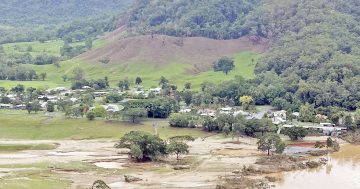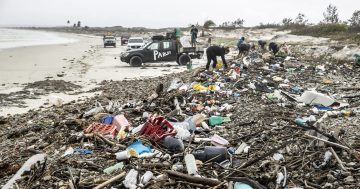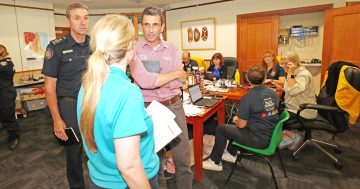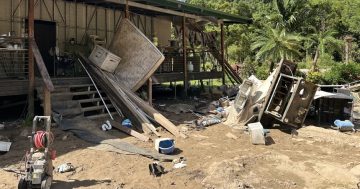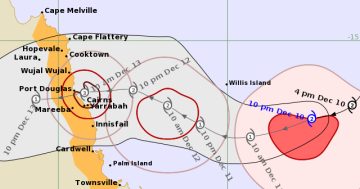
Some of the extensive flooding left in the wake of Tropical Cyclone Jasper. Photo: ADF.
The Federal and Queensland State Governments have announced that disaster assistance funding for councils in the areas affected by Tropical Cyclone Jasper has been extended.
The announcement comes nearly three weeks after Jasper made landfall near Cape Tribulation in Queensland’s far north on 13 December. Despite being a relatively mild Category 1-2 cyclone, Jasper dumped hundreds of millimetres of rain over the region, causing extensive flooding across a wide area from Cairns’ northern beaches to up past Cooktown and in inland regions.
As a result, local councils in the region will have access to additional funding as they look to repair infrastructure and for their ongoing disaster recovery operations.
The funding will be provided through the joint Commonwealth-State Disaster Recovery Funding Arrangements (DRFA) to Kowanyama Aboriginal Shire Council, Lockhart River Aboriginal Shire Council and Carpentaria Shire Council.
Federal Minister for Emergency Management Murray Watt said the cyclone had a massive impact across the far north.
“The Australian Government is continuing to work with the Queensland Government to support affected communities,” he said.
“Ongoing damage assessments identified that more assistance was needed for several communities, which is why we have now activated the additional council areas for disaster assistance.
“This support will aid councils in their response and recovery efforts.”
Queensland Minister for Fire and Disaster Recovery Nikki Boyd added, “The extension of assistance to Kowanyama, Lockhart River and Carpentaria follows previously announced support measures for 10 other council areas.
“Through the Queensland Reconstruction Authority, we’ll continue to stay in close contact with all impacted councils and provide help where needed.”
On 29 December, Federal Minister for Government Services Bill Shorten said the government had paid out more than $15 million in federal disaster assistance to people affected by the cyclone who live and work in the Cairns, Cassowary Coast, Cook, Douglas, Hope Vale, Mareeba, Tablelands, Wujal Wujal and Yarrabah Local Government Areas (LGAs).
He said 13,600 claims have been submitted for the Australian Government Disaster Payment (AGDRP), a one-off $1000 payment for affected adults and $400 for children, and the Disaster Recovery Allowance (DRA), which provides up to 13 weeks of income support to assist employees and sole traders who have experienced a loss of income as a direct result of the cyclone.
To aid in processing these payments, Services Australia deployed 15 staff to Mossman, Machans Beach, Holloways Beach, Cooktown, Daintree, Wonga Beach and Trinity Bay.
In addition to the direct support for individuals, Mr Shorten said an estimated $64 million, which was announced just before Christmas by the Federal and Queensland governments, will be directed to assist tourism operators, farmers, small businesses and not-for-profits in their recovery.
He said that recovery will be a much longer process while the flood waters are receding.
“Supporting impacted individuals in communities through crisis is what Services Australia is geared to do,” Mr Shorten said. “Services Australia staff are well practised in standing up and supporting Australians during times of emergency.
“I encourage those in the impacted areas to check their eligibility for disaster assistance available through the Services Australia website.
“Australian Government Disaster Payments are available for children and adults who are seriously affected because of the declared disaster, including by major damage to their home or major assets. Payments are also available to people who have been seriously injured in the disaster or are the immediate family of someone missing or killed.”
Further information on disaster assistance can be found at www.disasterassist.gov.au or www.qld.gov.au/disasterhelp, or via the Queensland Community Recovery Hotline on 1800 173 349.
Original Article published by Andrew McLaughlin on PS News.


